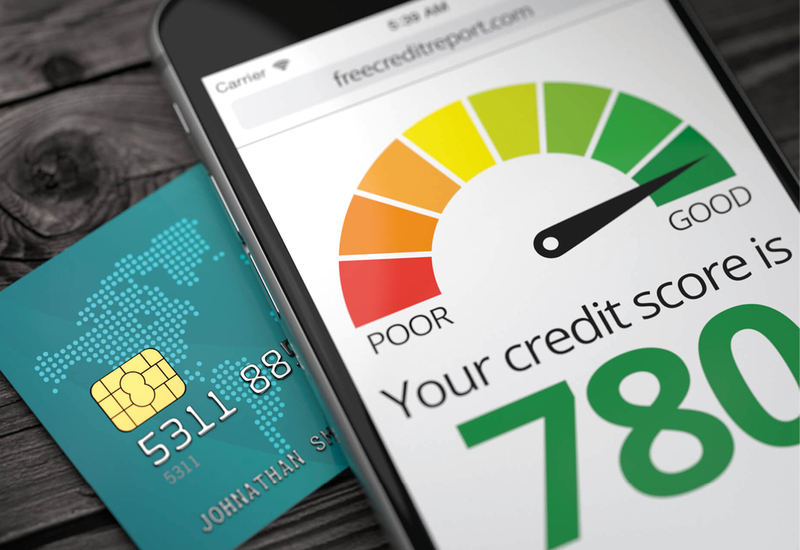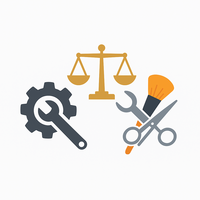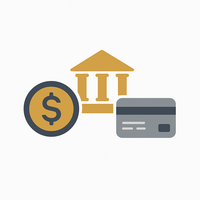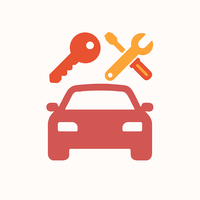Detailed Guide: How to Build and Improve Credit History in the USA for New Immigrants

1. 🔑 Basics of the U.S. Credit System
- In the U.S., there is no single government registry — data is collected by three private credit bureaus: Equifax, Experian, TransUnion.
- Based on this data, banks and lenders calculate a credit score (FICO or VantageScore).
- Scale:
- < 580 — Poor
- 580–669 — Fair
- 670–739 — Good
- 740–799 — Very Good
- 800+ — Excellent
👉 New immigrants start with “no credit history” (No credit), not with bad credit. This period usually lasts the first 3–6 months after opening your first credit card (e.g., secured card) — there isn’t enough data in the bureaus, so the score is not yet calculated.
2. 📊 Main Factors Affecting Credit Score
According to FICO and services like Credit Karma, Experian, etc., your credit score is formed from the following components:
- Payment history — 35%
- The most important factor. Even a 1-day late payment can seriously hurt your score.
- Credit utilization — 30%
- The ratio of used credit to your total limit. Recommended ≤ 30%, ideally ≤ 10%.
- Length of credit history — 15%
- The longer your accounts are open, the better. Closing old cards is usually bad.
- New credit inquiries — 10%
- Each “hard inquiry” temporarily lowers your score (usually 3–5 points). Ideally, no more than 3–4 applications per year. More than 5–6 in a short period may raise red flags.
- Credit mix — 10%
- Having different types of credit: credit cards, auto loan, mortgage, student loan, etc.
3. 🧾 Documents You Need
To start building credit history, you need:
- SSN (Social Security Number) — required by most banks.
- If you only have ITIN (Individual Taxpayer Identification Number), some banks (e.g., Capital One, Amex) still accept it.
- U.S. residential address — banks require proof (lease agreement, utility bill).
- Checking account — recommended to open immediately (Bank of America, Chase, Wells Fargo).
4. 🚀 First Steps to Build Credit History
4.1. Open a Checking Account and a Secured Credit Card
- Open a checking account with a debit card at a major bank (Bank of America, Chase, Wells Fargo). To avoid monthly fees, deposit at least $500 (amount varies by bank). Keep the balance above this level, otherwise you may pay a $8–14 monthly fee.
- Immediately apply for a secured credit card at the same bank. Always choose a card with no annual fee.
💡 Tips:
- Prefer VISA, since some merchants accept only VISA (e.g., Costco, Aliexpress).
- If you don’t have official income (salary, etc.), you can list alternative sources (e.g., $1000 from relatives supporting you at first). Without listing some income, the bank will likely reject the application, as “no income” is seen as a risk.
⚠️ Important to Know:
- What is a secured credit card? It’s a credit card backed by a deposit. You deposit a certain amount (e.g., $200–$500), which is frozen and becomes your credit limit. After about 1 year, if used responsibly, the deposit is usually refunded.
- Your first credit card is the most important one. Never close it, since it builds the foundation of your credit history and strongly affects your score (Length of credit history).
4.2. Additional Credit Cards
- After your first card, you can apply for additional cards that are easier to get.
- Best options: Discover and Capital One.
- Apply after 2+ months and make sure they have no annual fee.
- Use the cards every month and pay in full.
4.3. Use a Credit Builder Loan (optional)
- A small loan ($500–$1000) held by the bank in a locked account.
- You make monthly payments, and at the end you get the money back.
- Good services: Self.inc, CreditStrong.
4.4. Become an Authorized User (optional)
- A family member or friend adds you to their credit card.
- Their history gets added to your credit file.
- ⚠️ Make sure they have good credit, low balance, and long history.
5. 📊 Credit Behavior Rules
- Credit utilization: keep ≤ 30%, ideally ≤ 10%.
- Payment history: 35% of FICO depends on on-time payments.
- Credit age: don’t close old cards unnecessarily.
- Credit mix: later add installment loans (car, personal loan, etc.).
- Inquiries: don’t apply for too many cards at once.
6. 💳 How to Use a Credit Card
When you get a credit card, there are two key dates: Payment Day and Report Day. Usually, Payment Day is 2–3 days earlier than Report Day.
📅 Example
You have a credit card with a $500 limit. Today is January 4, statement balance = 0.00. Payment Day — February 11, Report Day — February 14.
🔹 Option 1. Automatic Payment
- Link your card to a recurring service (e.g., phone, internet $35–50).
- Example: February 1 a charge of $45 + $3.25 fee = $48.25.
- Set autopay from your checking account for $48.25 (e.g., on the 20th of each month).
- The system works automatically, but check if the service fee or amount changes.
🔹 Option 2. Active Usage
- Use your credit card for online shopping, stores, gas, restaurants — safer than debit and offers cashback.
- Example: spend $350 of $500 limit, then $40 on gas.
- After payments post (about 3 days), transfer $390 from checking to your card.
- Keep spending and paying this way.
⚠️ Key Rule Before Report Day
- About 3 days before Report Day (e.g., Feb 10–11), leave a small balance (about $45) and pay the rest.
- On Report Day, this balance is recorded.
- After Report Day (e.g., Feb 15), pay off the balance in full and continue using the card. You can pay until Payment Day (e.g., March 11). If you don’t pay right away and keep spending, the system will first apply payments to the old balance, then to new charges, and carry over the remainder into the next statement.
- Never change the balance amount on Report Day — even $1 difference can affect your score.
- From Report Day to Payment Day, payments must be at least equal to the balance on Report Day. If you only pay the minimum — interest will be charged on the remaining balance. If you pay less than the minimum — it’s marked as late, damaging your credit history.
💡 Tips:
- Utility bills (electricity, water, trash, school meals) may have high fees when paid by credit card. Sometimes it’s better to pay with a debit card or directly from checking.
7. ⚠️ Common Mistakes for Beginners
❌ Closing your first card → you lose history.
❌ Late payment even by $1 → your score drops sharply.
❌ Using 90–100% of your limit → hurts your score.
❌ Applying to 5 banks at once → temporary score drop.
❌ Paying for “credit repair services” → often scams.
⚠️ Important Notes:
- Credit score is influenced by credit cards, mortgages, and auto loans. Installment payments in stores usually do not appear on your credit report, but any missed payment is immediately recorded and affects your credit file.
- When buying a car, dealers often offer “in-house” financing. The interest rates are extremely high, and these loans usually do not get reported to your credit history.
- When purchasing expensive items (computers, appliances, etc.), you may be issued a credit card with an almost fully utilized limit (e.g., $1100 purchase with a $1200 limit). This heavily damages your score. In addition, the terms may be unfavorable — such as annual fees and other charges.
8. 🕐 Timeline for Credit Growth
- 3–6 months: your first credit score appears.
- 12 months: can reach Good (680–700+).
- 2–3 years: stable Very Good (740–780).
- 5+ years: with good habits, you can achieve Excellent (800+).
9. 📌 Practical Tips for New Immigrants
- If you’re from a country with credit history (Canada, UK, India), some banks allow you to transfer history (via Nova Credit).
- Check your reports once a year at annualcreditreport.com. Errors are possible.
- Watch out for autopayments — they may not always post at the same time and could land on Payment Day, leaving you short.
- Refunds for returned items/services may arrive unexpectedly and change your balance on Report Day.
🎯 Summary
- Start with a secured card.
- Become an authorized user if possible.
- Keep utilization low and always pay on time.
- Gradually open new cards and loans.
Within 1–2 years you can reach Good/Very Good, and within 3–5 years — Excellent, even if you arrived in the U.S. with no credit history.
 Education
Education
 Services
Services
 Financy
Financy
 Vehicles
Vehicles


You don't have any comments yet